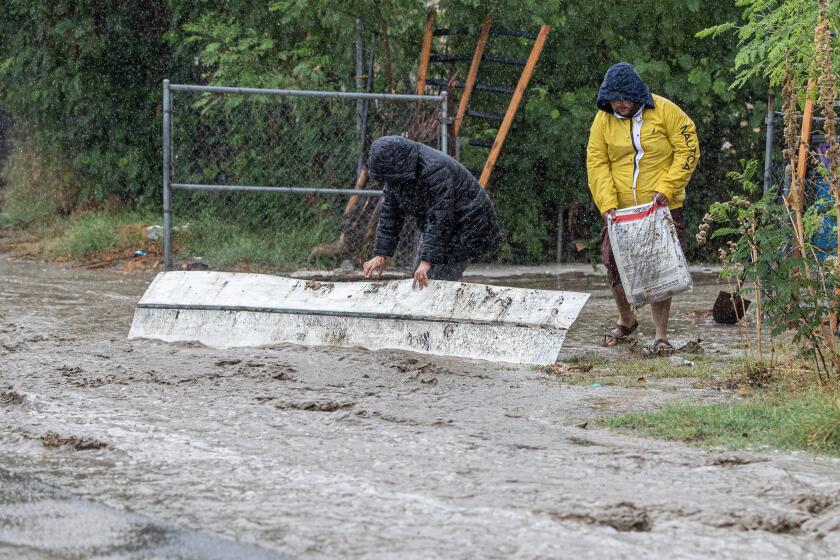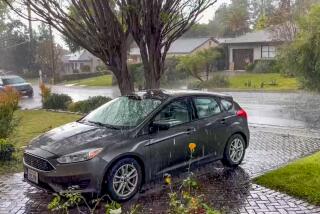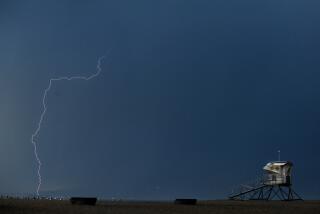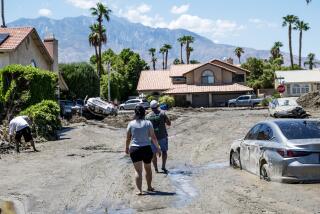Washed-out freeways, flooded streets, but Los Angeles escapes the worst of storm
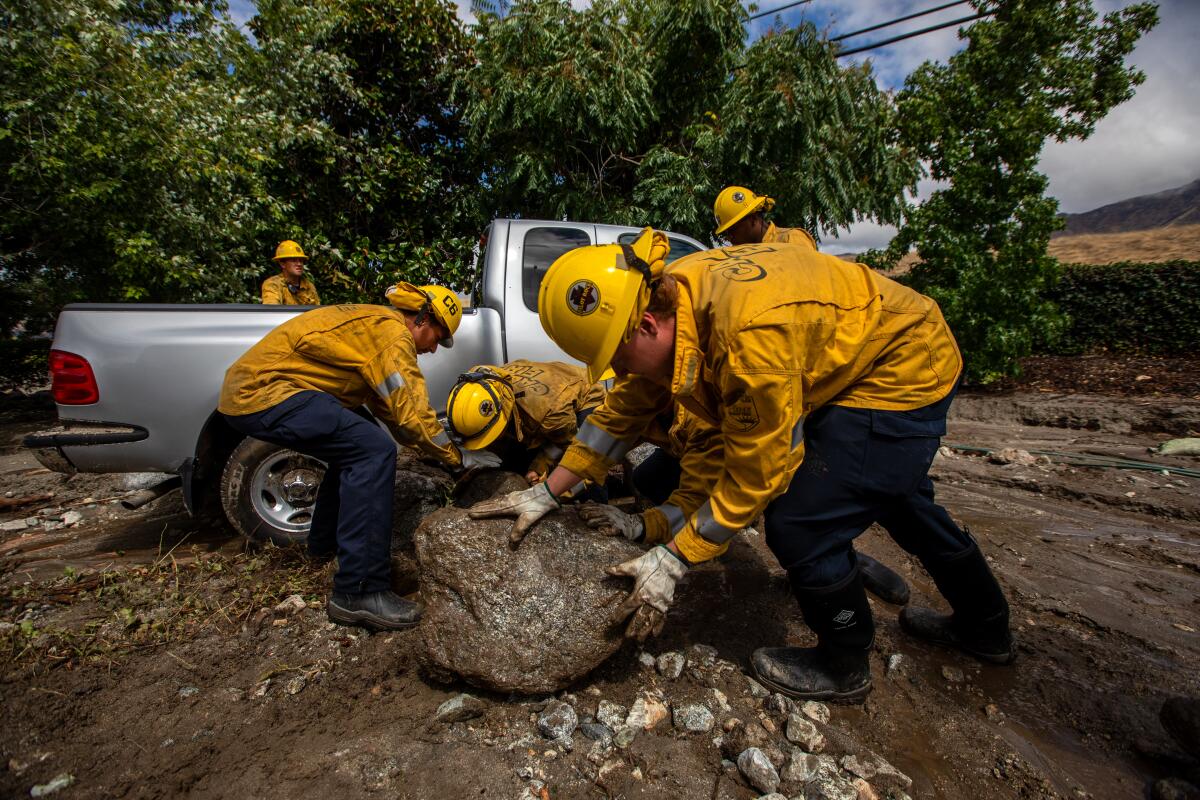
Across the Southland, freeways flooded, motorists were left stranded and drivers spun out as the downpours from the remnants of Tropical Storm Hilary rolled in.
But despite thrashing rains, boulders tumbling onto highways, washed out roads, floating cars, toppled trees and even a 5.1 earthquake, there were no significant roadway disasters caused by the storm.
While damage is still being assessed, officials say the combination of intense attention to what was expected to be an unprecedented storm, emergency preparation and a Sunday evening landing helped prevent car accidents and vehicles being swept away.
“The ‘stay at home, stay informed and stay safe’ messaging played a major role in reducing exposure to potential dangers,” said Los Angeles Fire Capt. Erik Scott. “We were fortunate because first responders and Angelenos were prepared, heeded warnings, and the weather was less severe than expected.”
The catastrophic flooding that many in Los Angeles County had braced for never came, but the rains brought slides and flooding to mountain and desert roads.
As of Monday afternoon, Caltrans was clearing debris and mud on 13 freeways and highways largely in Kern, Inyo, Mono, Riverside and San Bernadino counties.
For the most part, Los Angeles, where the center of the storm landed for a period, avoided much of the destruction. There were 22 minor mudflows, dozens of traffic accidents, a flooded Sun Valley intersection where one person was rescued and five vehicles stranded, Scott said. There were no reported fatalities.
“It was incredible downpour, but it moved through quickly,” said Michael Comeaux, a spokesperson for the California Department of Transportation in Ventura and Los Angeles counties. “We don’t have a whole lot of damage to report. ... Part of it is was there was so much advance warning not only from the National Weather Service, but every public agency said it was going to be bad.”
Poor farming communities in Coachella Valley flatlands face dire threat of flooding as Tropical storm Hilary pounds SoCal.
Riverside County was among the hardest-hit areas. A foot of mud and debris covered Interstate 10 at Bob Hope Drive in the Thousand Palms area Monday morning.
“When it initially started, there were a number of traffic accidents across roadways throughout Riverside County,” said Shane Reichardt, spokesperson for the Riverside County Emergency Management Department. “But we were continuing to push the message that we wanted people to stay indoors and to limit their travel. And a lot of residents took heed to that.”
Not all, of course. In Cathedral City on Sunday, Jimmy Laker and his girlfriend, Cindy Gilissen Smith, drove through river-like streets in their Chevy 2500 pickup to help trapped residents, some who had taken refuge on their roof. More than 11 inches of rain fell on Mt. San Jacinto near Palm Springs.
“I felt I was pushing my luck,” Laker later said. As he drove through the night he could could hear the brakes screaming from all of the mud that got stuck in them.
The region had braced since Wednesday for what had been expected to be the first tropical storm in Southern California in more than eight decades. It weakened significantly before it made landfall, and the region never saw the gale force winds that many feared would come.
And it helped that the most intense part of the storm fell on a Sunday night.
“It was during the weekend, so we didn’t have commuter traffic that we might normally see,” Reichardt said. “It also helped that the brunt of the storm happened in the evening and overnight hours. So those all those factors together combined to help make that a little bit easier.”
More to Read
Sign up for Essential California
The most important California stories and recommendations in your inbox every morning.
You may occasionally receive promotional content from the Los Angeles Times.


